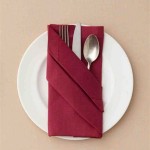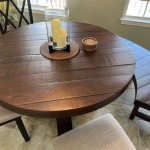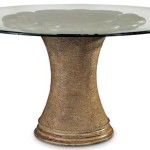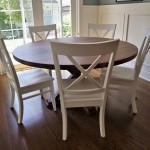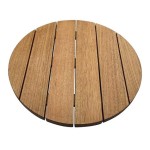How To Choose The Perfect Patio Dining Table: Round or Square
Selecting the right patio dining table involves careful consideration of several factors, including available space, aesthetic preferences, the number of people typically dining, and the overall style of the outdoor area. A key decision is whether to opt for a round or square table, each offering distinct advantages and disadvantages. This article provides a comprehensive guide to help navigate this crucial choice, enabling the informed selection of a patio dining table that perfectly complements the outdoor living space.
The shape of a patio dining table significantly impacts the flow of traffic around the space, the seating arrangement, and the visual appeal of the outdoor area. Understanding the nuances of each shape, considering both functional and aesthetic aspects, is paramount to creating a harmonious and inviting outdoor dining experience. This article will analyze the strengths and weaknesses of both round and square tables, equipping readers with the knowledge needed to make the best possible decision for their specific needs and circumstances.
Space Considerations and Patio Layout
The primary factor driving the choice between a round and square patio dining table is the available space within the patio area. Round tables typically work well in smaller, more confined spaces, as their curved edges allow for easier navigation and prevent sharp corners from obstructing pathways. A round table, being symmetrical, can be positioned centrally, creating a focal point without dominating the entire area. This is particularly beneficial for patios with limited square footage, where maximizing usable space is crucial.
Square tables, on the other hand, are generally more suited to larger patios. Their linear design complements rectangular or square patio layouts, creating a sense of order and structure. A square table placed against a wall or fence can effectively define a dining area while leaving ample space for other activities. However, in smaller patios, a square table can feel bulky and may impede movement. Furthermore, sharp corners can be a safety hazard, particularly for households with young children.
When assessing the space, it's important to consider the surrounding elements, such as landscaping, walkways, and other patio furniture. Determine how the table will interact with these elements and whether its shape will complement or clash with the existing aesthetic. Measure the available space accurately and visualize how each table shape will fit within the designated area. This will provide a clearer understanding of which shape will optimize the available space and create a more functional and visually appealing outdoor dining environment.
Beyond the immediate dining area, consider the overall layout of the backyard or outdoor space. If the patio is part of a larger, open-plan outdoor living area, the table shape should ideally harmonize with the surrounding elements. A round table might soften the angular lines of a modern deck, while a square table could reinforce the structured design of a formal garden. The goal is to create a cohesive and balanced outdoor space where all elements work together harmoniously.
Seating Capacity and Social Interaction
The number of people typically dining on the patio is another significant factor to consider. Round tables generally promote more inclusive conversations, as everyone is equidistant from one another, fostering a sense of equality and connection. This makes them ideal for smaller gatherings and intimate meals where facilitating interaction is a priority. The circular shape encourages eye contact and makes it easier for all diners to participate in the conversation.
Square tables, in contrast, can accommodate more people, particularly larger square tables with expandable leaves. They offer a more formal seating arrangement, with distinct sides that can be used to delineate groups or hierarchies. While square tables may not foster quite the same level of intimacy as round tables, they are well-suited for larger families or groups who prefer a more structured dining experience. The straight edges also make it easier to add extension leaves, expanding the seating capacity when needed.
When considering seating capacity, it's crucial to account for the comfort of the diners. Overcrowding a table can lead to discomfort and negatively impact the dining experience. Ensure that each person has ample space to eat and move comfortably. It's also important to consider the type of chairs being used. Armchairs, for instance, require more space than armless chairs. Before making a final decision, physically measure the chairs and table to ensure that they will comfortably accommodate the desired number of people.
Consider the frequency of different group sizes. If most meals are enjoyed by a small family, a smaller round table is sufficient. If large gatherings are common, a larger square table or a round table with leaves might be more appropriate. The ability to adapt the table size to accommodate different group sizes is a valuable asset, particularly for those who frequently entertain. This flexibility ensures that the patio dining area remains functional and comfortable regardless of the number of guests.
Aesthetic Style and Overall Design
The aesthetic style of the patio and the surrounding landscape will also influence the choice between a round and square dining table. Round tables often lend themselves to more informal and relaxed styles, such as bohemian, rustic, or Mediterranean designs. Their curves soften the overall look of the space and create a welcoming and inviting atmosphere. They can also complement natural elements, such as flowing plants or winding pathways.
Square tables, on the other hand, tend to suit more contemporary or formal styles, such as modern, minimalist, or traditional designs. Their clean lines and geometric shapes create a sense of order and sophistication. They can also complement architectural elements, such as straight lines and sharp angles. A square table can be a statement piece, adding a touch of elegance and refinement to the outdoor dining area.
Consider the materials used in the patio's construction and furniture. A wooden round table might complement a natural stone patio, while a metal square table could enhance a concrete patio. The colors and textures of the table should also harmonize with the surrounding elements. Pay attention to the details, such as the table's base, edges, and finish, to ensure that it complements the overall design aesthetic.
The choice of table shape can also influence the selection of other patio furniture and accessories. A round table might pair well with curved benches or chairs, while a square table might be complemented by rectangular seating options. The lighting, landscaping, and decorative elements should also be chosen to complement the table's shape and style. The goal is to create a cohesive and visually appealing outdoor space where all elements work together to create a harmonious and inviting atmosphere.
Beyond the immediate practical considerations, personal preferences play a crucial role in selecting the ideal patio dining table. Consider the desired ambiance for the outdoor dining area. Do you envision a relaxed and intimate setting, or a more formal and structured space? Allow personal style and aesthetic sensibilities to guide the decision-making process, ensuring that the chosen table reflects individual tastes and preferences. The chosen table should be something that evokes joy and complements the overall aesthetic of the home.
Ultimately, the selection of a round or square patio dining table is a personal decision based on a confluence of factors, including space availability, seating requirements, aesthetic preferences, and the overall design of the outdoor living area. By carefully considering these factors and weighing the pros and cons of each shape, individuals can make an informed choice that results in a functional, stylish, and inviting patio dining space.
:strip_icc()/102762703-09b6f8b473cb49079223f8a690a35e65.jpg?strip=all)
How To Choose A Size For Your Patio

The Best Patio Furniture And How To For It Reviews By Wirecutter

Key Measurements For Designing Your Perfect Patio

Key Measurements For Designing Your Perfect Patio

21 Best Patio Tables And Sets For Outdoor Dining In 2024

Lanai Round Fliptop Outdoor Patio Dining Table White Mesh Chair Crate Barrel

Patio Dining Sets Made In Usa Free

21 Best Patio Tables And Sets For Outdoor Dining In 2024

Key Measurements For Designing Your Perfect Patio

21 Best Patio Tables And Sets For Outdoor Dining In 2024
Related Posts

